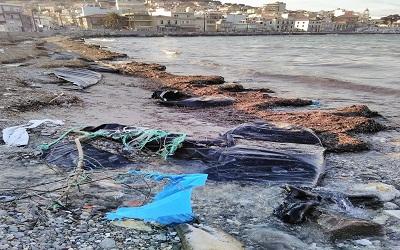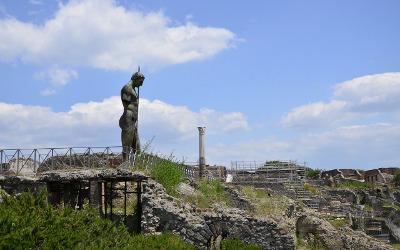Day 29, Year of #Mygration: Border Crossing Monuments

By Evgenia Iliadou, PhD student at the Open University. Evgenia's research focuses on the multiple forms of everyday violence and social harm that border crossers experience.
"Lesvos Island, May 2017. From where I am standing I can see the Turkish coast. During the night one can also see the lights on the other side of the Greek-Turkish border. The other side. The other side, as well as the people of the other side, is so close but at the same time so far away. The Greek and Turkish borders touch each other at a cognitive vertical line, dividing the sea through the middle, but at a point where the eyes cannot see – some 4.1 miles away. The beach underneath me is full of waste- border crossing waste. The ruins of a grey plastic boat, half buried under the sand, are left there as monuments and reminders of the thousands of border crossings. The ruins of a grey plastic boat are left there as an evidence of a “crime”. Τhat is how ‘irregular’ migration is coldly defined according to the criminal law; as a criminal act. Clothes are lying on the beach. Large sized clothes. Small sized clothes. Adults’ clothes. Childrens' clothes. A child’s lifejacket is floating in the sea. It capsizes and finally drifts away on the waves. I cannot help but feel that I have just entered a crime scene. How many people, I wonder, have lost their lives on this little piece of earth alone? How many lives have been wasted here? Wasted lives and dreams are silently lying there, underneath my feet. The macabre feeling that I will confront a dead body washed ashore by the sea has overwhelmed me.
The statue of the Asia Minor Mother - the symbol of the massive forced displacement of 1922 - holding her children is standing still behind me. It has become unnoticeable to people and looks forgotten by both people and time. Her back is turned to the sea and faces the city. Her gaze cries out, “Forget me not!” connoting the unequal game between collective memory and oblivion. I look at her and wonder; has she just arrived? Has she just fled and been washed ashore in one of the ruined plastic dinghies underneath my feet? As I stare at the lifejackets floating in the sea and at the Asia Minor Mother statue holding her children, I cannot help but think that I am standing between two different border crossing monuments in time and space; the Asia Minor Catastrophe of 1922 and the refugee crisis of 2015. Both border crossings monuments connote and manifest refugee journeys, massive deaths, forced displacements, unrecognised genocides, suffering and trauma; a continuum of violence in time and space.
As Walter Benjamin argues, “There is no document of civilization which is not at the same time a document of barbarism.”
Quarterly Review of Research
Read our Quarterly Review of Research to learn about our latest quality academic output.

Contact our news team
For all out of hours enquiries, please telephone +44 (0)7901 515891
